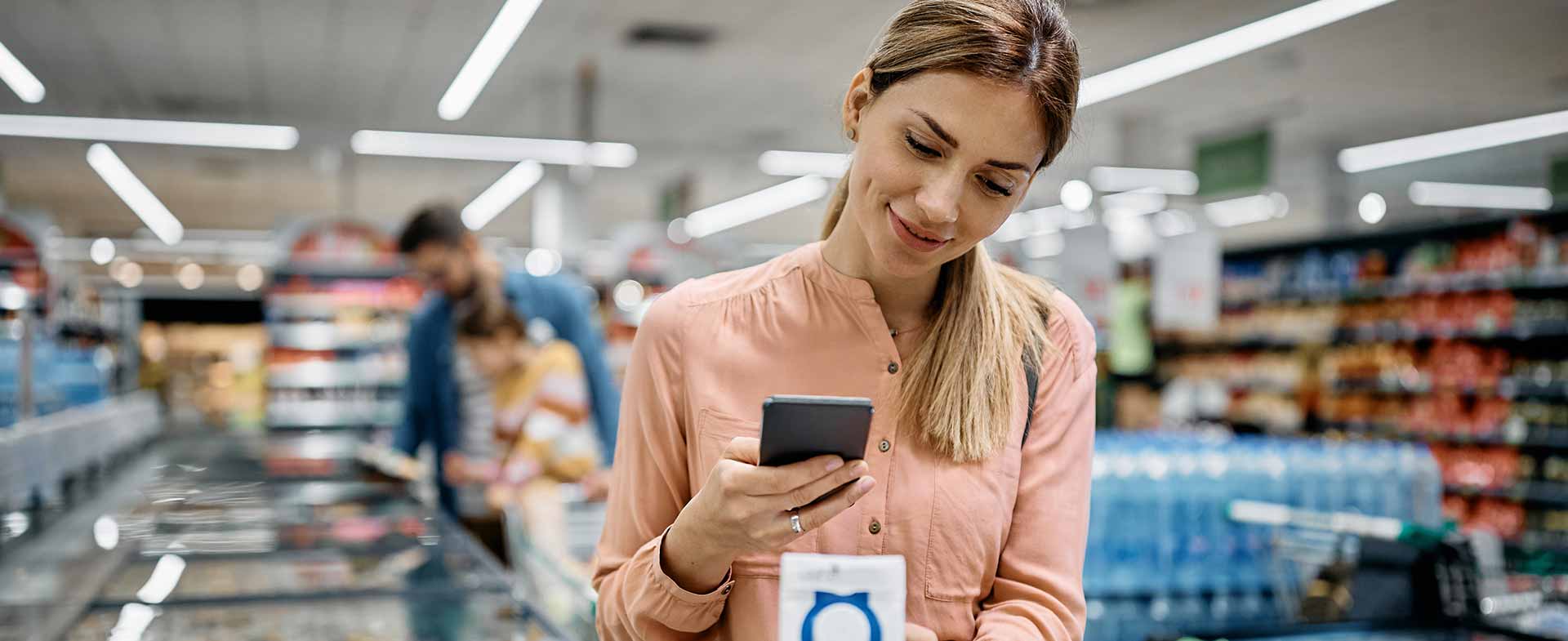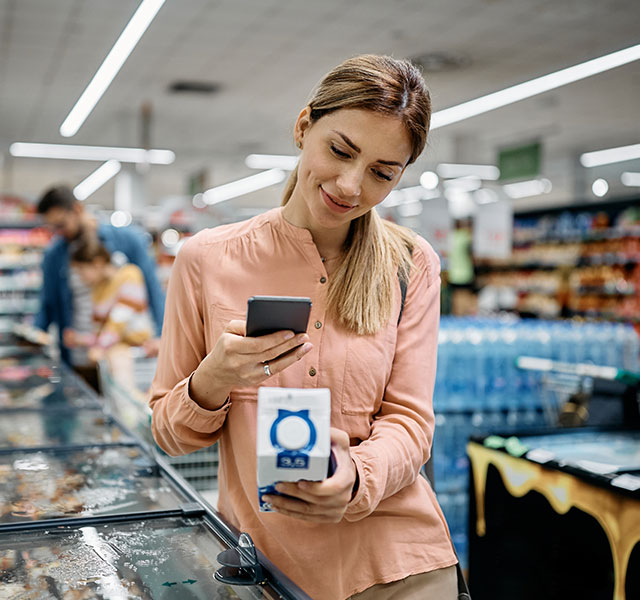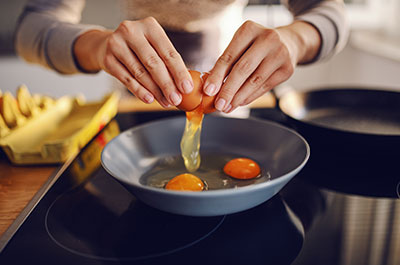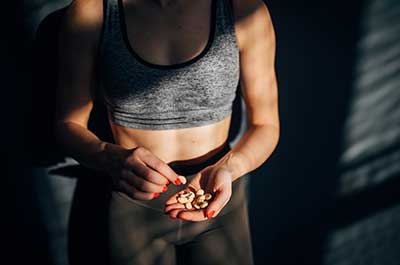Let’s face it: food labels can be confusing. If you’re trying to eat well, you’ve got to read through nutrition facts and ingredient lists—and who has the time and energy for that?
Enter food scanning apps that “rate” your food for you. Simply scan your food’s barcode and these apps tell you whether your food is healthy, unhealthy or somewhere in between.
Do these apps simplify healthy eating, or are they creating more problems than they solve? Henry Ford Health registered dietitian Leah Oldham, RDN, explains the pros and cons of using food scanning apps, and the best way to create a diet that works for you.
Should We Be ‘Rating’ Foods?
While it’s true that broccoli is more nutritious than a cookie, Oldham says rating foods as “good” or “bad” sends a misleading message. “I think these apps have good intentions behind them,” she said. “But they’re presenting food in a black-and-white way, when the reality is far more nuanced.”
For example, maybe you add a splash of half-and-half to your coffee each morning. “If you scan the half-and-half, chances are, the app will flag it as ‘bad’ because it’s high in saturated fat and calories,” says Oldham. “But if you’re eating an otherwise healthy diet, using a tablespoon of cream each day is not a problem.”
Even so-called “unhealthy” foods can be part of a balanced diet if you’re not eating them frequently. However, these food apps could set you up for an unrealistic goal of eating perfectly 100% of the time.
“Most people should limit their saturated fat intake, but you don’t have to avoid it entirely,” says Oldham. “An app may tell you that a hamburger is always a bad choice because it’s high in calories and saturated fat. But if you really love burgers, you might feel frustrated or defeated because your favorite food is now off-limits, according to an app.”
Plus, there are ways you can make that burger healthier without giving it up entirely. “Consider using lean meat, a whole grain bun instead of white, grilling instead of frying and adding lots of veggies,” suggests Oldham.
What Food Scanning Apps Are Missing
Oldham explains that food rating apps don’t know your health needs or even how often you’re consuming each food. “The ideal diet follows some common guidelines about calories, sugar, saturated fat and other nutrients, but this standard plan may not fit your personal needs,” Oldham explains.
Your food choices should be influenced by your:
- Activity level: If you exercise regularly and have more muscle mass, you likely need more calories than someone who is sedentary. “Some of these apps assume the average user is inactive and focused on cutting calories to maintain or lose weight, but this is not always the case,” Oldham says. “If you’re an avid exerciser, the guidance you get from these apps may not apply to you.”
- Current weight: Apps may shun calorie-dense foods, but these foods are good choices for some people. “If you’re underweight or going through medical treatments like chemotherapy that can cause weight loss, you may need to gain weight,” says Oldham. “And often, nutritious and high-calorie foods like peanut butter or cheese get less-than-perfect ratings—even though they may be ideal foods for you right now.”
- Health conditions: “These apps may not take into account people who have a condition like diabetes, heart disease or a nutrient deficiency who may need more personalized diet recommendations,” Oldham says. “In these cases, you may benefit from medical nutrition therapy, which is a customized plan designed to help manage health conditions.”
- Overall eating patterns: If you eat a varied, healthy diet most of the time, an occasional low-rating food won’t harm your health—and shouldn’t be framed as a “bad” choice. “Even if you consume one of these low-scoring foods regularly, it might still fit nicely into a balanced diet, depending on how you use it,” Oldham says.
Concerns About Disordered Eating
Rating your food can also spark fears that certain foods are forbidden, which could lead to orthorexia or other disordered eating patterns. “A fear-based eating pattern can lead to unhealthy habits, such as severe calorie restriction,” Oldham explains. “This approach can shape a negative relationship with food.”
For example, a slice of cake may get a “red” label from your food app. Then, when you’re faced with a piece of cake at your friend’s birthday, you feel guilty eating it. “Food is part of celebrations and human connection,” says Oldham. “This app doesn’t take the social aspect of food into account, which can lead to unnecessary stress or an unhealthy preoccupation with everything you eat.”
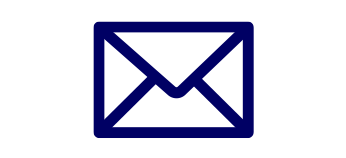
Subscribe To Our E-Newsletter
The Best Foods Don’t Have Barcodes
Perhaps the biggest issue is that the foods we should eat the most—whole foods—aren’t even included in these apps. “An apple or a head of lettuce doesn’t have a barcode,” says Oldham. “Yet those unpackaged foods in the produce section should be a major part of our diets.”
And remember that some processed foods carry the “organic” label—but they’re still processed foods. “An organic granola bar may not necessarily be healthier than a non-organic one, even though it gets more points on the app,” says Oldham. “Your best bet is to focus on fruits, vegetables, lean proteins and whole grains—organic or not. Use the app as a tool to guide your choices with packaged products, but don’t let it distract from the value of real, whole foods.”
Should You Use a Food Scanning App?
Food rating apps aren’t all bad, however. They can help you start paying attention to ingredients, additives and labels, which can be a good thing. “If an app gives someone a better understanding of what they’re eating, that’s a win,” Oldham says.
Just don’t expect the app to create the perfect diet for you on its own. After all, it doesn’t know you from your neighbor next door—and chances are, you have different dietary needs. “Focus on whole foods, variety and how foods make you feel,” Oldham suggests. “These factors matter much more than a score.”
In the end, an app can be a piece of the puzzle, but not the whole picture. “Use an app for more insight about food, but don’t rely on it for all your diet decisions,” Oldham says. “Think critically about what your body needs and see a registered dietitian if you need professional guidance.”
Reviewed by Leah Oldham, RDN, a registered dietitian at Henry Ford Health.
